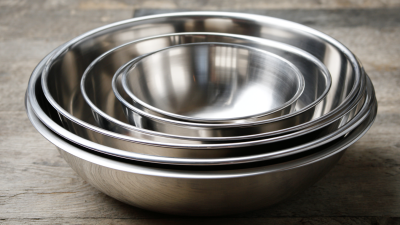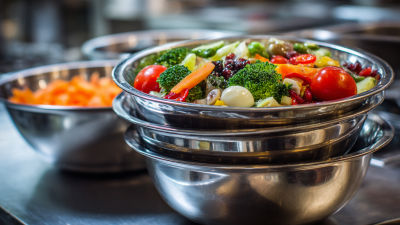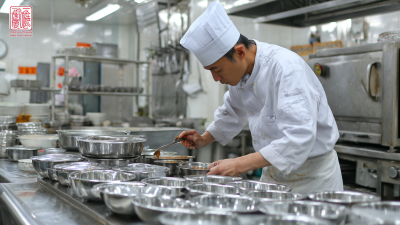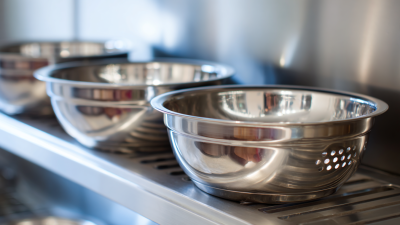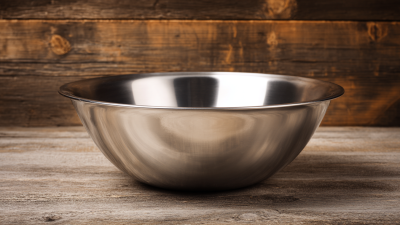In the diverse world of culinary tools, selecting the right equipment can significantly enhance your cooking experience. Among these essentials, Stainless Steel Kitchen Bowls stand out for their durability, versatility, and hygienic properties. According to a recent market research report by Grand View Research, the global kitchenware market is anticipated to reach USD 93.59 billion by 2025, with stainless steel products gaining substantial traction due to their long lifespan and resistance to corrosion and rust. Additionally, a survey by the American Association of Kitchen and Bath highlights that 79% of professional chefs prefer stainless steel bowls for their stability and ease of cleaning. As the kitchen evolves into a multifunctional workspace, understanding the key features and benefits of Stainless Steel Kitchen Bowls is essential for both amateur cooks and seasoned professionals alike, ensuring that you make a well-informed choice tailored to your culinary needs.
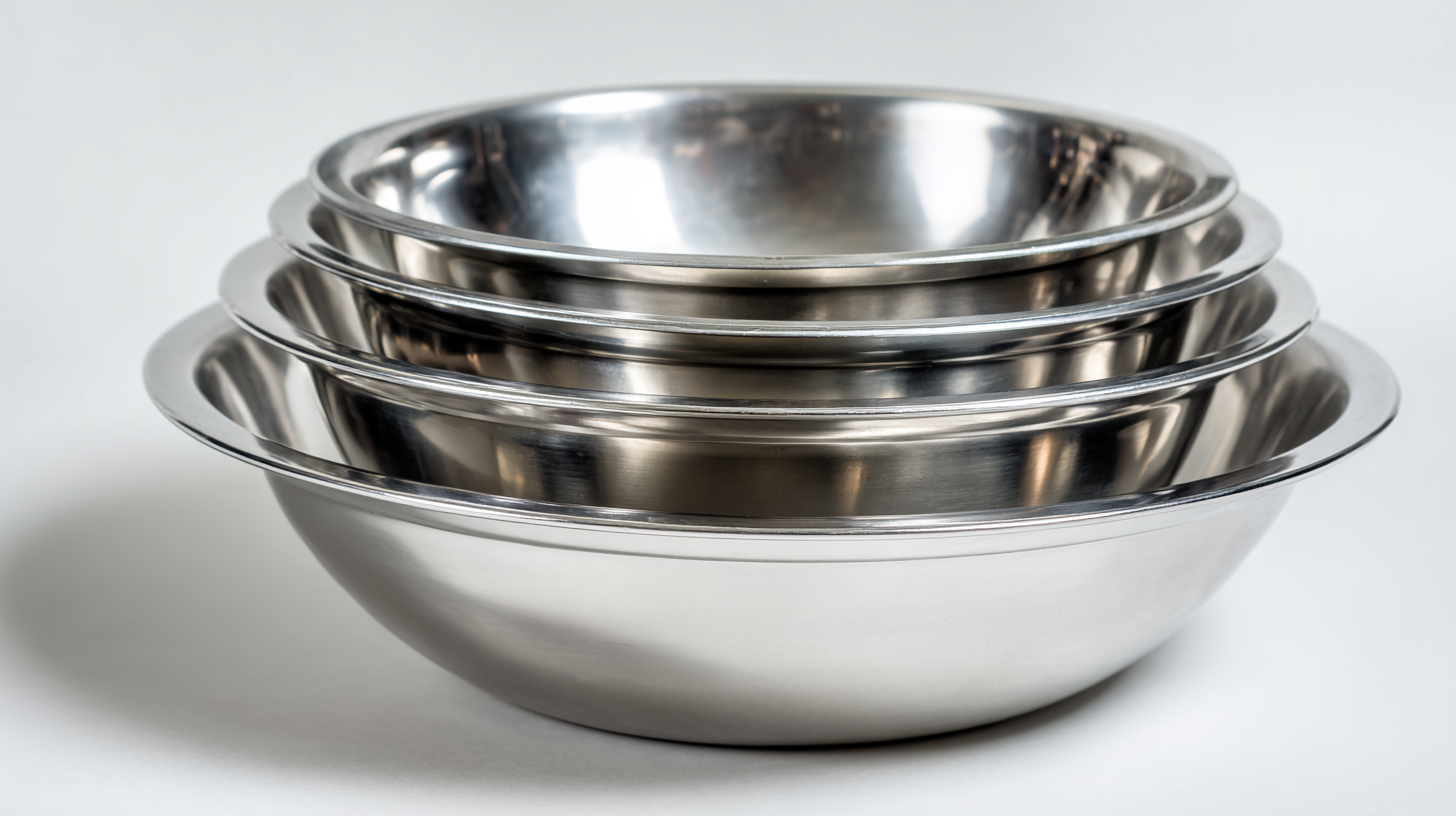
When it comes to selecting stainless steel kitchen bowls, understanding the different types available is crucial for meeting your cooking needs. Stainless steel bowls come in various sizes, grades, and styles, each designed for specific tasks. For instance, the most common grades are 18/8 and 18/10, where the numbers indicate the percentage of chromium and nickel, respectively. This composition not only enhances the metal's durability but also its resistance to rust and staining, making them ideal for food preparation.
Tips: When choosing bowls, opt for 18/10 stainless steel for increased corrosion resistance and longevity, especially if you plan to use them frequently in a busy kitchen.
Another consideration is the bowl's shape. Deep bowls are perfect for mixing ingredients, while shallow bowls help in whisking or serving. The mixing bowl market is projected to grow at a CAGR of 4.2% from 2021 to 2026, indicating a rising trend in culinary pursuits and an increasing need for multi-functional kitchenware. Ensure that your choice fits comfortably in your kitchen space and aligns with your cooking style, from casual meal prep to gourmet cooking.
Tips: Look for nesting bowls for efficient storage, and consider those with non-slip bases to aid in stability during vigorous mixing.
| Type of Bowl | Material Grade | Size (Quart) | Best Use | Price Range |
|---|---|---|---|---|
| Mixing Bowl | 18/10 | 2-6 | Baking and Mixing | $10 - $30 |
| Prep Bowl | 18/8 | 1-3 | Prepping Ingredients | $5 - $20 |
| Serving Bowl | 18/10 | 3-8 | Salads and Dishes | $15 - $50 |
| Mixing Bowl Set | 18/10 | 1-8 | Complete Mixing Needs | $25 - $80 |
| Nested Set | 18/8 | 1-5 | Space-Saving Storage | $20 - $60 |
When selecting stainless steel kitchen bowls, several key features should be prioritized to enhance both functionality and durability. Firstly, gauge thickness is essential; bowls with a thickness of at least 18/10 (18% chromium and 10% nickel) offer greater resistance to rust and corrosion, ensuring longevity during daily use. According to the Stainless Steel Association, the higher the gauge, the more robust the bowl, making these options ideal for heavy mixing and prepping tasks.
Another significant feature to consider is the design of the bowl. Look for bowls with a non-slip base, as they provide stability during mixing, which is especially crucial when using electric mixers. Additionally, ergonomic handles can enhance user comfort during pouring or transferring ingredients, as highlighted in a recent report by the Kitchenware Manufacturers Association, which noted that 72% of users preferred bowls with easy-grip designs. Lastly, nesting capabilities allow for efficient storage, with many modern stainless steel sets designed to fit neatly within each other, saving precious kitchen space. By prioritizing these features, you can choose the perfect stainless steel bowls tailored to your cooking needs.
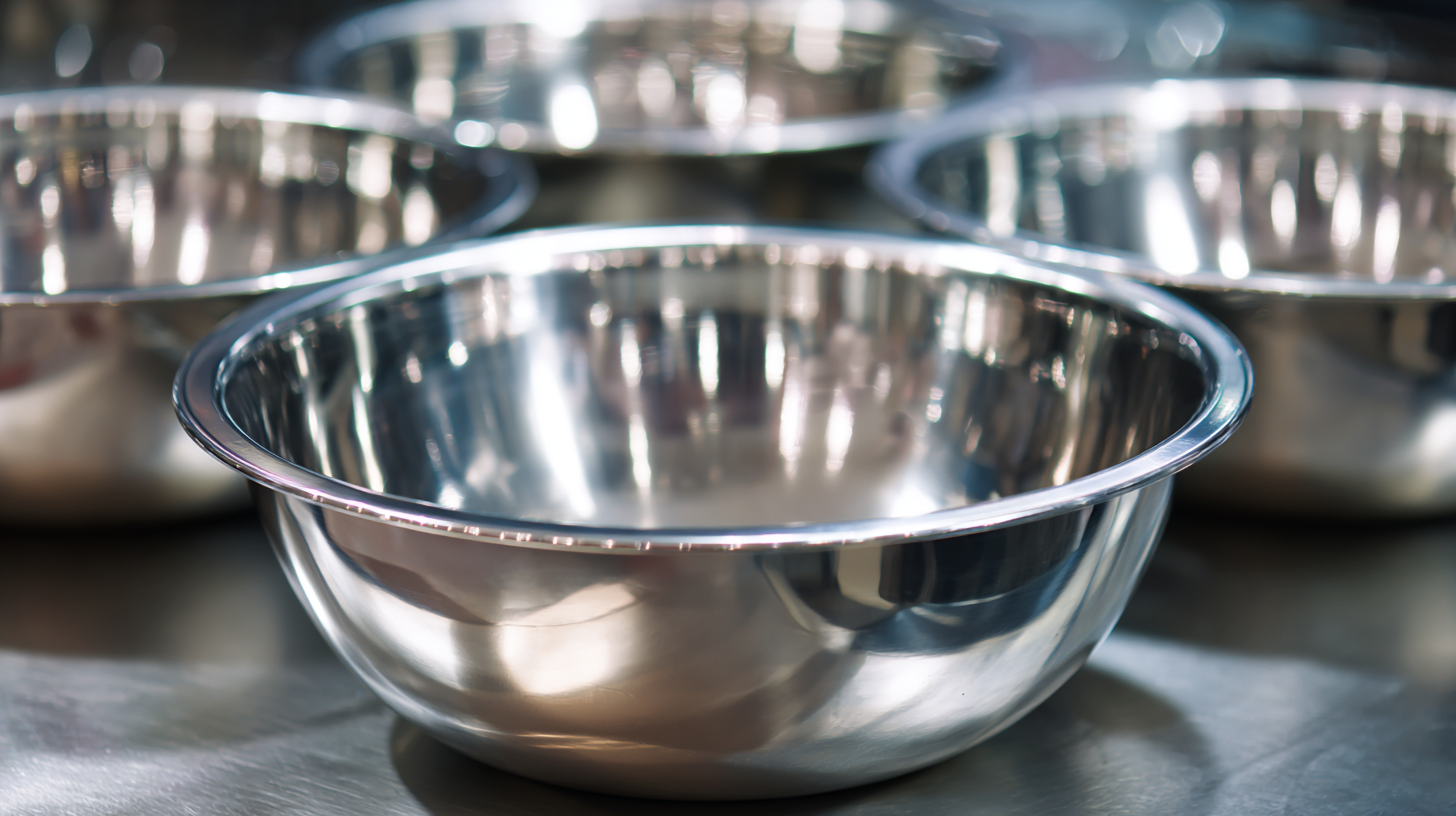
When selecting stainless steel kitchen bowls, understanding size and capacity is crucial to meet your cooking needs effectively. Consider the types of dishes you frequently prepare; larger bowls are ideal for mixing salads or dough, while smaller ones work well for prepping ingredients. Assess the volume of food you'll typically be working with, as having a range of bowl sizes can significantly enhance your cooking efficiency.
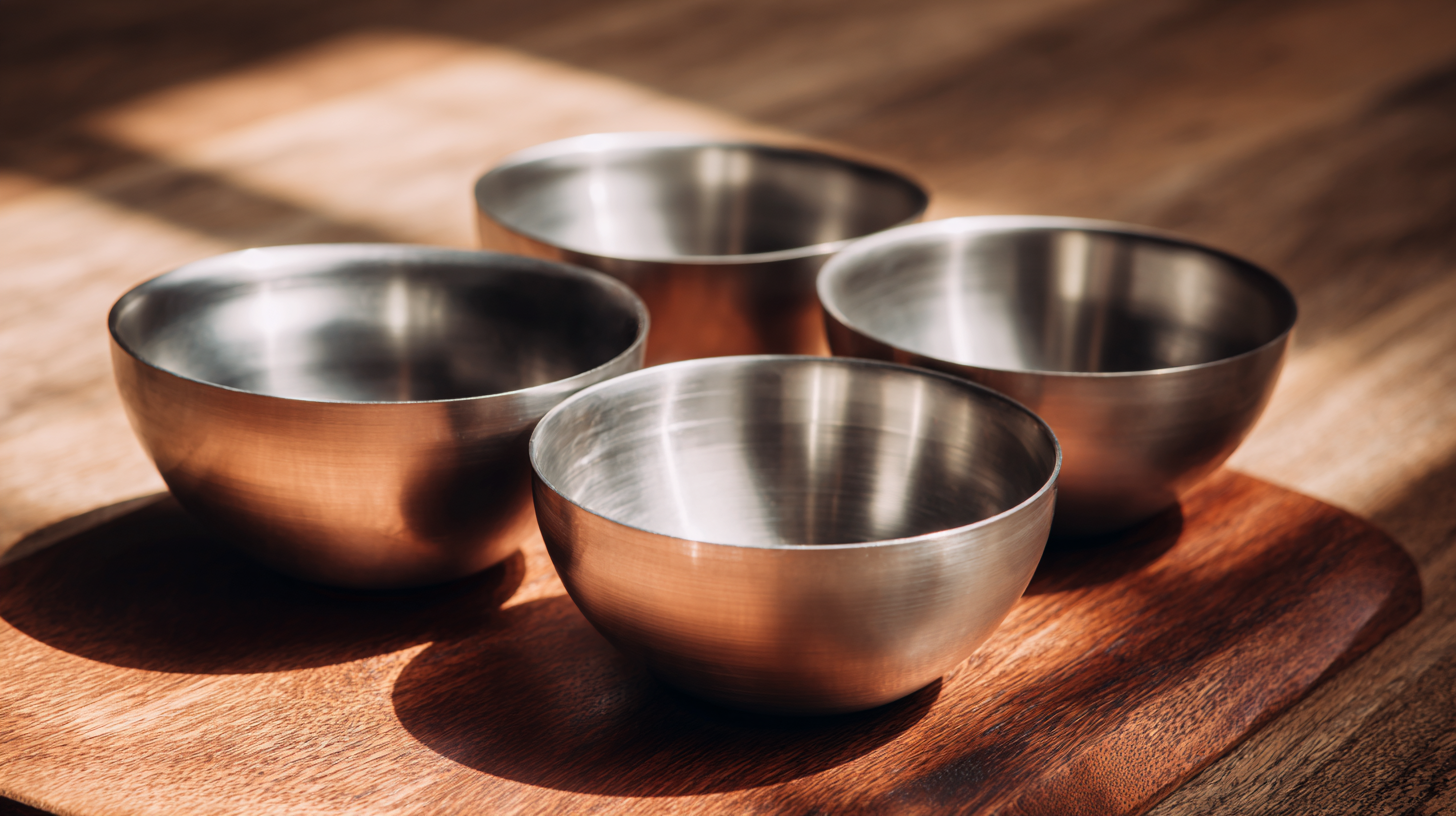
Moreover, the impact of various cooking methods on the nutrients of your ingredients should also influence your choice. For instance, if you frequently cook with traditional food plants, you might benefit from having a larger bowl that accommodates whole ingredients, allowing for better preservation of nutrients and flavors. Additionally, investing in bowls that are compatible with food processors or dehydrators can streamline your preparation process, making it easier to maximize the dietary potential of the dishes you create.
When choosing stainless steel kitchen bowls, evaluating their durability and resistance is crucial for ensuring they can withstand the demands of cooking. High-quality stainless steel bowls are not only resistant to rust and corrosion, but they also maintain their shine and appearance over time, even with frequent use. Look for bowls that are made from high-gauge stainless steel, as they tend to be more durable and capable of handling the rigors of meal prep or baking without warping or denting.
**Tips:** Always opt for bowls with a brushed finish for added resistance to scratches and fingerprints. Additionally, consider the weight of the bowls; heavier bowls often provide better stability when mixing or whisking ingredients. A set of mixing bowls in various sizes can be particularly beneficial for tackling diverse cooking tasks efficiently.
Another feature to look for is the ease of cleaning. Stainless steel bowls should be dishwasher-safe, making post-cooking cleanup seamless. Ultimately, investing in robust stainless steel bowls will enhance your cooking experience and ensure that your kitchenware lasts for years to come.
Stainless steel kitchen bowls are a staple in any kitchen, known for their durability and resistance to staining and rust. To ensure these bowls serve you well for years to come, proper maintenance and care are essential. After each use, wash the bowls with warm, soapy water and a soft cloth or sponge. Avoid abrasive scrubbers as they can scratch the surface and diminish the bowl’s shine. Rinse thoroughly to remove any soap residue and dry them immediately with a soft towel to prevent water spots.
In addition to regular cleaning, it’s important to store stainless steel bowls correctly. Nesting them inside one another can save space, but place a paper towel between each bowl to prevent scratching. If your bowls have developed any stains or discolorations, a mixture of baking soda and water can help restore their appearance. For tough stains, a gentle abrasive cleaner can be used sparingly. By following these simple maintenance tips, you can keep your stainless steel kitchen bowls looking great and performing well for all your cooking needs.
